 |
||
|
||
| ||
Today we are going to review Thermaltake XP480 PSU, which is included into the Thermaltake Soprano chassis bundle. Besides, you can find this PSU as a stand alone product in retail. OverviewThe supply unit has a 0.6 mm thick steel case. There are no burrs, chippings, and other intolerable defects. So, we have no gripes with the metal working quality. The PSU case is of a standard gray color, we noticed no surface defects either. 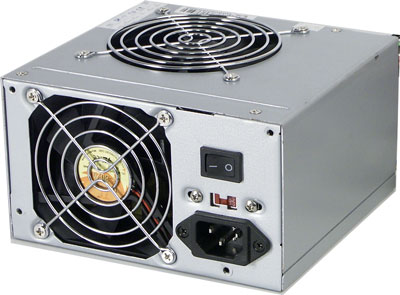 The outer panel houses:
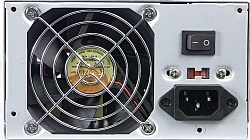
 The rear panel houses:
The top panel houses an air vent for a 92 mm fan, which is screwed to it on the inside. A sticker with permissible load currents per channel is at the right side of the case. The manufacturer claims the following parameters for this PSU model...
This information in the standard table is certainly insufficient, as it lacks maximum power capacities, both the total of 3.3V and 5V channels as well as the overall PSU power capacity. The upper right corner of the sticker flashes 400W in large red letters. Can it be the maximum output capacity of this model? I doubt it very much - when you sum up all channel loads, taking into account the maximum currents, specified in the majority of PSUs on condition of non-simultaneous maximum load per channels, you get about 400 W, to be more exact - 410 W. The sticker also states the peak load of 500W. What concerns the compliance of the PSU under review with a certain ATX12V standard version, the situation is the following...
Considering that the PSU specifications are a tad worse than those for a 300W PSU according to the ATX12V 1.3 version, to say nothing of Version 2.2, comparison with a typical 400W PSU does not seem appropriate. Thermaltake XP480 is equipped with the following connectors:
Thus, the PSU provides the following power connectors:
The PSU uses 20 AWG wires - nothing more than satisfactory. The PSU is equipped with two fans from Yen Sun Technology corporation
The first one is installed on top of the PSU, the second one is on the outer panel of the supply unit. Together they are responsible for the cross ventilation of the supply unit, which must have a positive effect on its temperature conditions. 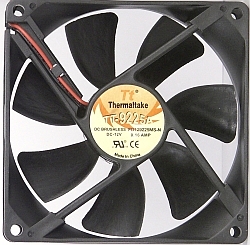
 High-voltage stages contain two 680 uF (200V) capacitors from Capxon, designed for 85°C maximum. The input filter is soldered almost in corpore (there is one empty seat for a capacitance). Heatsinks on switching transistors and diode packs are aluminum plates (3mm thick) with a split top. This technical solution was probably used to increase the heat exchange surface. But in fact, it hasn't grown much. In this case it would have been more efficient to use an L-shaped heatsink with the same height - thus the heat exchange surface could have been increased by one third. Dimensions of the heatsink on the switching transistors are 65 x 40 mm, diode pack heatsink dimensions - 80 x 40 mm. The heatsinks are arranged parallel to the axis of the 80 mm fan, which must foster better heat exchange. 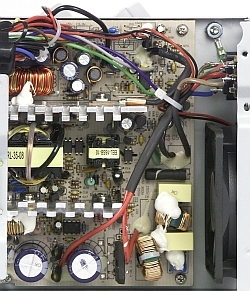
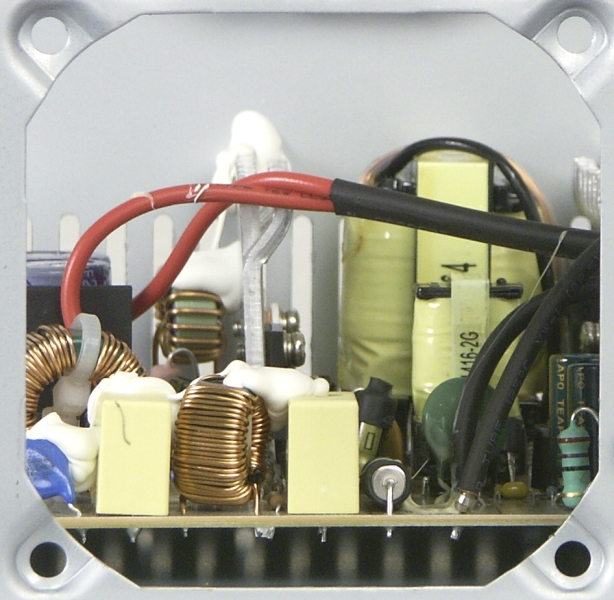 
 The main PCB contains the UC3843B controller from STMicroelectronics, acting as the main controller. The PCB also houses the HY510N chip, responsible for auxiliary functions. The output low-voltage stages are equipped with 2200 and 1000 uF capacitors from Teapo and Ltec, maximum temperature for most of them is 105°C. There is an empty seat for the second capacitor in the 12V stage. There is only one choke with a toroidal core - group regulation. A thermal sensor is screwed to the heatsink on diode packs, wires from fans and the sensor are integrated into the main PCB. The main PCB is marked HEC AR-TX /PTX (Intel 1.2) 2004.03.23. It names the manufacturer - a group of companies HEC, quite a large manufacturer of chassis and power supply units. ATX12V version is specified in parentheses. Then follows the manufacturing date. The board also lists 250-300 W models, where it's used. On the whole, circuit wiring is rather neat, but wires connecting some elements make it look untidy. PSU testsTaking into account the questionable issue with the official output capacity, we decided to test this PSU as a 300 W model and only then check how it works at 350 W and 400 W. We measured ripple at 75% of the 300W output capacity according to the distribution of loads, recommended by the manufacturer. We also measured voltage ripple at the maximum load on the 12V channel.
 In the first case, 5V ripple reached 18mV (the permissible value is up to 50mV), 12V ripple - 38mV (the permissible value is up to 120mV). In the second case - 18mV and 39mV correspondingly. As you can see, ripple is within the acceptable bounds. We tested the voltage stability for several loads, calculated according to their combination within the specification parameters, but in original proportions - 33%, 66%, and 100% per channel of the calculated overload capacity, taking into account the 12V-line maximum power consumption. We also took some readings with two arbitrary load combinations. As usual, we measured voltages with Fluke 111 multimeters of the True RMS class. 
 5V and 12V stability is OK up to 277 W, voltage deviations do not exceed 3%. On the whole, 3.3V stability is satisfactory. But when this channel is heavily loaded (you will hardly come across this situation in a modern system), the error exceeds the permissible 5% limit. When we tried to exceed the 277 W output capacity, all the voltages left the permissible corridor of values. In case of 304 W load, the PSU switched off in 4 minutes. When we turned it on again in a minute, the PSU switched off in 59 seconds. The PSU revived in 12 hours. Testing the PSU under heavier loads makes no sense, as even at 300W the output voltages do not meet the accepted requirements. We used the following testbed configuration for our next tests:
We had no problems (having to do with the PSU design) installing the PSU into a chassis. In our tests we used CPU RightMark utility in Demo mode (90 minutes) and FarCry (60 minutes). In the course of our tests the system never froze, rebooted, or failed - in other words the system was stable.
Voltage ripple is within the mark. Now what concerns the noise situation... On the whole, the cooling system produces little noise under low and medium loads, the thermal control system works correctly. In Stand by mode the PSU is constantly whining in high frequencies. It's not loud, but still annoying. When you turn on a computer, its tone changes - it gets lower, but not much. This whining is nearly inaudible, when a computer is turned on. ConclusionsOur main conclusion - we've seen this 277-Watt PSU sold as a 400-Watt power supply unit. Theoretically, this PSU can be taken as a normal 250-Watt model according to ATX12V 1.3 version with 10% marginal output power capacity.
Write a comment below. No registration needed!
|
Platform · Video · Multimedia · Mobile · Other || About us & Privacy policy · Twitter · Facebook Copyright © Byrds Research & Publishing, Ltd., 1997–2011. All rights reserved. | ||||||||||||||||||||||||||||||||||||||||||||||||||||||||||||||||||||||||||||||||||||||||||||||||||||||